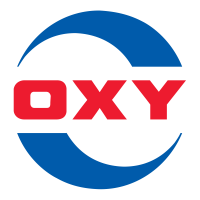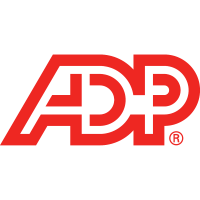
ACS Actividades de Construccion y Servicios SA
MAD:ACS


| US |

|
Fubotv Inc
NYSE:FUBO
|
Media
|
| US |

|
Bank of America Corp
NYSE:BAC
|
Banking
|
| US |

|
Palantir Technologies Inc
NYSE:PLTR
|
Technology
|
| US |
C
|
C3.ai Inc
NYSE:AI
|
Technology
|
| US |

|
Uber Technologies Inc
NYSE:UBER
|
Road & Rail
|
| CN |

|
NIO Inc
NYSE:NIO
|
Automobiles
|
| US |

|
Fluor Corp
NYSE:FLR
|
Construction
|
| US |

|
Jacobs Engineering Group Inc
NYSE:J
|
Professional Services
|
| US |

|
TopBuild Corp
NYSE:BLD
|
Consumer products
|
| US |

|
Abbott Laboratories
NYSE:ABT
|
Health Care
|
| US |

|
Chevron Corp
NYSE:CVX
|
Energy
|
| US |

|
Occidental Petroleum Corp
NYSE:OXY
|
Energy
|
| US |

|
Matrix Service Co
NASDAQ:MTRX
|
Construction
|
| US |

|
Automatic Data Processing Inc
NASDAQ:ADP
|
Technology
|
| US |

|
Qualcomm Inc
NASDAQ:QCOM
|
Semiconductors
|
| US |

|
Ambarella Inc
NASDAQ:AMBA
|
Semiconductors
|
Utilize notes to systematically review your investment decisions. By reflecting on past outcomes, you can discern effective strategies and identify those that underperformed. This continuous feedback loop enables you to adapt and refine your approach, optimizing for future success.
Each note serves as a learning point, offering insights into your decision-making processes. Over time, you'll accumulate a personalized database of knowledge, enhancing your ability to make informed decisions quickly and effectively.
With a comprehensive record of your investment history at your fingertips, you can compare current opportunities against past experiences. This not only bolsters your confidence but also ensures that each decision is grounded in a well-documented rationale.
Do you really want to delete this note?
This action cannot be undone.

| 52 Week Range |
34.206
44.7
|
| Price Target |
|
We'll email you a reminder when the closing price reaches EUR.
Choose the stock you wish to monitor with a price alert.

|
Fubotv Inc
NYSE:FUBO
|
US |

|
Bank of America Corp
NYSE:BAC
|
US |

|
Palantir Technologies Inc
NYSE:PLTR
|
US |
|
C
|
C3.ai Inc
NYSE:AI
|
US |

|
Uber Technologies Inc
NYSE:UBER
|
US |

|
NIO Inc
NYSE:NIO
|
CN |

|
Fluor Corp
NYSE:FLR
|
US |

|
Jacobs Engineering Group Inc
NYSE:J
|
US |

|
TopBuild Corp
NYSE:BLD
|
US |

|
Abbott Laboratories
NYSE:ABT
|
US |

|
Chevron Corp
NYSE:CVX
|
US |

|
Occidental Petroleum Corp
NYSE:OXY
|
US |

|
Matrix Service Co
NASDAQ:MTRX
|
US |

|
Automatic Data Processing Inc
NASDAQ:ADP
|
US |

|
Qualcomm Inc
NASDAQ:QCOM
|
US |

|
Ambarella Inc
NASDAQ:AMBA
|
US |
This alert will be permanently deleted.
 ACS Actividades de Construccion y Servicios SA
ACS Actividades de Construccion y Servicios SA






 You don't have any saved screeners yet
You don't have any saved screeners yet

Hi, good morning, everyone. Thanks for joining us for this presentation related to third quarter results of Grupo ACS. Here with me are Management representative; our CEO, Juan Santamaria; and our Corporate General Manager and CFO; Ángel García Altozano who will briefly analyze the key effects of our results, which were released yesterday.
As always, we will follow by a Q&A session. Juan, all yours?
Thank you so much, Luis, and thank you, everyone, for joining us today. I will proceed with the results presentation, and I look forward to your questions at the end of it.
Starting with Slide 2 and the key 3Q 22k figures. Our sales increased by 20.4% to EUR 24.5 billion. FX adjusted sales grew by 10.6% reinforced by an outperformance of our core regions, particularly the U.S. market.
On a quarterly basis, sales grew by 29.5% in Q3, plus 15% FX adjusted. Backlog stood solid, reaching maximum highs at EUR 70.4 billion, thanks to the strong order intake in the last 12 months, amounting to over EUR 36 billion and supported by the U.S. dollar strength. Recent multibillion awards in the U.S. and Australia are not yet included. This will push backlog further up at the year-end.
EBITDA accounted for EUR 1.26 billion and EBIT for EUR 839 million, increasing by 8.4% and 8.2%, respectively.
Operating margins remained practically stable on a like-for-like basis. Slight changes are due to variations in the business mix with a greater weight of the building infrastructure activities coming from Turner whose margin is lower in line with its risk profile. Net profit from operating activities stood at EUR 421 million, plus 25.5% year-on-year, supported by the positive performance of the businesses and CIMIC minorities buyout.
Total group's net profit reached EUR 418 million as it includes capital gains from asset disposals and positive impact from financial derivatives.
As of September 2022, the group held a net debt position of EUR 288 million, improving by EUR 3.3 billion in the last 12 months after the sale of Industrial Services activity in December '21. Year-to-date, net cash went down by nearly EUR 2.3 billion.
EUR 1.5 billion allocated to strategic acquisitions, such as the buyout of CIMIC minorities and a 14.5% stake in HOCHTIEF acquired to Atlantia. The remaining EUR 0.8 billion cash outflow is due to the seasonal effect of the working capital.
Turning to Slide 3. The geographical breakdown after the disposal of Industrial Services in 2021, the group's sales and backlog rebalanced towards its core strategic regions. Sales weight in America increases up to 63% of which 56% comes from the U.S. market; 6% from Canada and the remaining 1% Latin America. Australia represents around 22% of the total sales. Europe revenues represent 15%, still being Spain the core market of the region, representing 9% of the overall sales of the group followed by Germany and the United Kingdom.
The backlog shows a similar distribution to sales just corrected from the proportional backlog from this CIMIC affiliate specialized in contract mining activities.
Turning to operating activities on Slide 4. In Construction, sales went up by 21.2%, consolidating growth trends across regions and supported by the U.S. dollar strength.
FX adjusted construction sales grew by 10.8% with low double-digit and high single-digit growth across core countries.
In particular, the U.S. market grew by 12% FX adjusted, Australia 13.2%, while Europe grew by over 6%, mainly the U.K. and [Indiscernible].
As you may see in these graphics, manual deviations in operating margins reflect business mix variations due to a higher growth in America. Basically Turner, where margins are in line with its business risk profile.
Meanwhile, CIMIC and Dragados' EBIT margins remained stable.
Let's move to the backlog in construction on Slide 5. Work in hand remains solid, reaching record highs, thanks to the strong last 12 months awards across activities and the positive impact from currency as a result of the strength of main currencies against the euro, particularly the U.S. dollar. A remark that the order intake in the period does not include just major recent awards such as a new Buffalo Bills Stadium or the 1888 studios in New Jersey, some building activities in India or mining and construction activities in Australia.
On Slide 6, and among the order intake in Q3, we could highlight. The widening and improvement of the IS-35 freeway in Travis County, Texas, EUR 663 million; engineering, procurement and construction contract to deliver services for the Artemis Gold at the Blackwater Gold Project in British Columbia for EUR 358 million; contract to deliver mining and maintenance services and asset management service for the Iron Bridge project in Western Australia of EUR 350 million; the design and construction of 18.1 kilometers of the S19 highway between Radzyn and Podlaski in Poland from EUR 129 million. The intake works, construction of wells and conduction of the hydraulic circuit in the Chira and Sora dams in Gran Canaria for EUR 124 million.
And moving to Slide 7. At the concessions activity performance, we can highlight that the EBITDA from concessions raised to EUR 165 million to which Abertis contributed with EUR 133 million plus 23% year-on-year. Abertis average daily traffic in the first 9 months rose by 12% year-on-year. Traffic levels recovery demonstrates the ongoing improvement that began in the last half of 2021, showing positive traffic trends above pre-pandemic levels, 4% year-on-year versus 2019. And individual country performances are as follows: France, plus 16%; Spain, plus 15%; Italy, plus 14%; Brazil, plus 6%; Chile, plus 19%; Mexico, plus 10%; and the U.S.A., plus 2%.
These positive operating performance, driven principally by the traffic recovery offset the expiry of some concessions such as Acesa, , Invicat and Sol.
Let me remark that revenues have not yet increased by CPI. It will be in 2023 when total tariff increase will be implemented according to inflation.
On the other side, financial expenses are impacted by inflation and interest rates raised.
Overall, Abertis net profit pre-PPA amortization reached EUR 506 million while net contribution to ACS profit accounted for EUR 113 million, up 30% year-on-year.
Also in April, Abertis distributed EUR 602 million of dividends in which EUR 297 million were attributed to ACS Group. As for Iridium, the net profit raised to EUR 33 million from EUR 20 million in the prior period.
On Slide 8, the recent agreement for the acquisition of the SH-288 toll lanes by Iridium significantly reinforces our exposure and commitment towards the activity of concessions.
As you may know, last September, we reached an agreement to acquire a 44.6% stake in the SH-288, one of the longest concession tenures in North America. In addition to 21.6% that is already owned.
In October, an additional 12.2% was agreed to be acquired to the 1 of the 2 remaining partners after concession. Total negotiated price for it is 56% stake amounting to around EUR 1.1 billion, subject to an authority and TIFIA consents.
Closing is expected if no delays by 2022 year-end. This transaction implies an equity value for the 100% of the asset of roughly EUR 2 billion, which means an IRR of 8.3%, assuming very conservative assumptions in terms of traffic growth, tariff scheme and financial conditions.
Moving to services on Slide 9. Both sales and operating margins evolved positively. In detail, sales reached EUR 1,358 million, growing by 11.4% coming from both domestic and international markets. Margins recovered pre-pandemic levels, raising EBIT to EUR 39 million. The backlog stood solid at EUR 2.6 billion. Clece has recently acquired subsidiaries in the U.K. contributed to the market outperformance.
Turning now to Slide 10. The Construction's net profit amounted to EUR 255 million, up by 22.1%, driven by the positive performance of the operating companies together with the buyout of CIMIC minorities. Concessions net profit raised to EUR 145 million, driven by a EUR 133 million contribution from ABE, thanks to the outstanding general increase in traffic rates explain this growth. The positive performance of Iridium also contributes with EUR 33 million, EUR 13 million more than the previous year. Services net profit reached EUR 22 million growing by 5.5% year-on-year. This positive performance of the businesses raised net profit from operating activities to EUR 421 million, plus 25.5% year-on-year.
Finally, ACS HQ accounted for EUR 59 million, which includes net capital gains from energy asset disposals as the 25% stake in Spanish PV sold to Galp in Q1, and a positive impact from financial derivatives linked to the ACS shares, was in the prior year, this had a negative impact of EUR 73 million. Overall, the group's net profit reached EUR 480 million, more than double of the 2021 pro forma results, excluding industrial services contribution.
On Slide 11, you can find the year-to-date net debt evolution. As you know, we started with a EUR 2 billion net cash position at the beginning of the year, and in September, we generated EUR 1,172 million cash from operations for CapEx and working capital. CapEx and operating lease payments amounted to EUR 317 million. After shareholder remuneration amounting EUR 919 million, and the EUR 100 million inflow from FX, partially offset by payments in Ichtys and Alto micro projects, the net cash position stood virtually the same.
Working capital outflow amounted to EUR 831 million year-to-date, affected by the seasonal effect, thus reducing the net cash position to EUR 1.2 billion. Strategic transactions have been carried out during the year amounting to EUR 1.5 billion. The acquisition of CIMIC minorities, which amounted to EUR 924 million, after deducting the capital increase in HOCHTIEF subscribed by minorities and the acquisition of a 14.5% stake in HOCHTIEF from Atlantia amounting to EUR 578 million. After these transactions, the group closed September with a net debt balance of EUR 288 million.
And finally, on Slide 12, and just to wrap-up, the key takeaways of these 9 months 2022 set of results are: Number one, we keep a strong operating performance with resilient cash flow generation. Two, maintaining a robust financial position despite seasonal effect of working capital. Three, with revenue visibility supported by a strong and quality backlog in core regions. And finally, as you can see in this transition year, we continue moving forward into the simplification of our corporate structure and reinvest in processing concessions. I'm sure you will have more input very soon.
Thank you very much for attending this conference today. And now we are ready to answer any questions you might have.
[Operator Instructions]
The first question comes from Bosco Ojeda from UBS.
A couple of questions from me. The first one, I would like to ask on the quality of the backlog. Where are you gaining new projects? I can see some details on the presentation, but where -- it is a very competitive market, your margins can improve on that sort of backlog, and while those contracts are inflation protected.
And the second question I have is on your balance sheet. I mean, I can see your debt levels are low, but you still have a lot of gross debt, nearly EUR 11 billion. If you could give us a bit of detail on the cost of renovating those credit lines, the cost of debt? How is it evolving? And also a little bit on the maturity schedule.
Okay. Thank you, Bosco. So starting with the backlog and the risk. As you know, our main strategy has been focused for a while in reducing our risk exposure in construction. And we've been transitioning from our traditional civil contracts in the last years where it were most commonly arranged through design deal, DBC, et cetera, into low-risk categories such alliances, cost pluses, schedule of rates, unit prices, et cetera. And I think that we have been very successful in that strategy.
If you go region by region, pretty much North America, all the turnover backlog -- and turnover backlog is in excess of the USD 23 billion. That's everything is low risk. We're protected by inflation, we're protected by supply chain disruptions. It's a very risk profile.
The same thing applies to Australia. Probably in Australia, we can look between 70% and 80% low-risk contracts and the rest of the projects that we have our design deal, but with good protections when it comes to supply change options and to hyperinflation.
Bear in mind that when we come to Australia backlog, most of these services is mining, is alliances and construction, et cetera, and a lot of the maintenance. So in general, and answering your question, I think it's a healthy backlog. We're quite comfortable with not only the risk profile, but margins. You will see that in the U.S., the margins have decreased a little bit, but that's just to the fact that revenues in the infrastructure building have increased. And typically, those have low risk associated and lower margins. But as we move towards a less commoditized type of infrastructure, we expect those margins to increase.
If we move to the debt level, I'm going to turn over to Ángel García Altozano because everyone understands the environment right now when it comes to interest rates and increase and Ángel will give you the detail on this.
Okay. Basically, in the next year, we've got approximately no significant debt becoming new other than the revolving line that we have. We have about close to EUR 2.4 billion of revolving lines, which are on a yearly basis. And obviously, the price will increase, basically the interest rates are going up. We think we're reaching relatively soon the level, the ongoing level because -- and you can see inflation addition the U.S. is actually declining. So we expect it's probably going to be another 100 basis points, but nothing significant. And as I said, we do not have any major loans, which are coming due. Basically the renewal of bilateral lines.
Bosco, just the information provided is in Page 11 of our results report, which we break down by company and by kind of debt our debt structure. And you can see there that what it was saying on about the revolving and short-term lines, EUR 2.4 billion divided in the different activities, but also highlighting the cash position the group has in all the levels. So practically offsets or even more than offset the impact of the interest rate increase.
The next question comes from Luis Prieto from Kepler.
We had a couple of questions, if I may.
[Technical Difficulty]
Yes, we have Luis Prieto to ask the second question. Thank you.
I had 2, if I may. The first one is, it would be focused on Dragados' Q3 performance. We have seen a sizable year-on-year EBITDA and EBIT margin erosion. Could you please shed some light on the potential reasons behind this evolution.
And the second one, you have used part of your industrial services proceeds to increase your HOCHTIEF stake. How should we think about the remaining minority position in the company over the next years?
Thank you so much, Luis. Well, first of all, the EBIT margin year-to-date of Dragados has been quite stable. You will see that the EBITDA has decreased, but that's just because we -- this is just depending on the degree that Dragados subcontracts versus the performance. The more Dragados subcontracts, the least -- the less, I mean, EBITDA, it has because at the end of the day, there's not an increase in CapEx or not an increase in sale performance operations. But of course, the more is the performance, the more CapEx, the more EBITDA increases and the more amortization increases. So I wouldn't pay a lot of attention into that. And obviously, 1 quarter does not represent anything. If you -- the most important thing is that the EBIT is remaining stable year-to-date, and we're quite comfortable with the performance.
When it comes to the acquisition of HOCHTIEF, as we have always said, yes, we want to simplify the structure. And yes, we believe that the acquisition of HOCHTIEF is an opportunity, but whether we continue or not, it pretty much depends whether is coming or not. We are not looking forward to an increase, but if there's a right opportunity, we might increase. So at this stage, we continue analyzing all our capital allocations depending on the current success.
The next question comes from Joao Safara from Banco Santander .
I have only one question. I mean, just wanted to understand a bit here what is the -- for this company and considering the -- I mean, as was mentioned before, the higher financing costs, what is the optimal level that ACS wants to have in terms of that considering this context? And the way I was looking at it and more or less, you've gone through a position of net cash after the sale of ACS Industrial Services? And obviously, you've been investing this money through shareholder remuneration, the investment in HOCHTIEF and through the acquisition of the managed lanes. By the end of the year, assuming some recovery of working capital, you should still be at -- I mean, sorry, you will be already at the net debt position, which, I mean, according to my estimates would be between EUR 600 million to EUR 800 million.
I mean, just trying to understand if the firepower that we often ask you about as changed given current environment. It seems to me that after what you've done, you'd be pretty much restricted in terms of firepower. So if you could help us a bit understand that and understand as well is, if this means that if there are no opportunities in the market right now, you also will not be looking for them in the sense that you would just use the firepower if a real good opportunity arises.
Okay. So first of all, I mean, our commitment is always to protect our investment grade. And that's our main commitment. Now I'm not the one to explain how rating agencies they look at that level because obviously, that changes from a company asset to asset and the right opportunity. But traditionally, rating agencies and when it comes to the level have been looking at ratios multipliers between 2.5 and 3. Obviously, that's on a general basis, and you need to go specifically. Some opportunities, and you've seen those in the market when it comes to certain assets, they've reached even 10x EBITDA.
So now according to that, what's the right level? Well, it comes to the rating agency to dictate what's the right level. But we have a $1.7 billion EBITDA. So I mean, we can speculate what that could be. So do we have firepower? Yes, we do. Are we looking for opportunities? Yes, we are. And I think we do have room for further opportunities. I take the chance to say that for me, the biggest opportunities are on the organic side, more than in the organic side. And that includes not only PPs, but a lot of our activities in the different areas as we transition to the infrastructure. And that by itself does not require necessarily a lot of capital investment.
The next question comes from Beltran Palazuelo from DLTV.
I have 2 questions. The first one is on Abertis. I've noticed in the CNMV that 3 or 4 weeks ago, you called an extraordinary AGM where the only point of AGM is shareholder contribution. So I suppose that means shareholders contribute money. So that means that they -- Aberties should be going to buy something in the near and medium term.
And my second question is regarding construction. More or less, I know the fourth quarter always cash comes in through working capital more or less; what cash approximately do you expect to come in, and regarding projects, regarding inflation and the part of the construction division that, let's say, it's not cost plus. Is there any project that you feel uncomfortable once you revise it at the end of the year that something you might announce or all projects are in line?
Okay. Regarding Abertis, let me turn over first to Ángel García who sits on the Board, and then I'll get to the next one.
What we have done on the shareholder level, we've absorbed both Atlantia and ourselves debt that the company has. So to strengthen the capital raise of a company of Abertis Infraestructuras, which is the operating company. And obviously, Abertis looking to buy assets, not only from ACS also, but also it sell directly. So we want to strengthen the capital base of the company. So -- but it's nothing new. It's nothing new that we have agreed with our partners to do.
And that amount, if it's possible in that amount, just...
EUR 1 billion in this case. [indiscernible].
Okay. Okay.
Okay. So then when it comes to the working capital, I mean, yes, we are expecting an inflow at the end of the year. Q3, as you know, it's always quite seasonal. Just looking at last year, I think that in the last quarter, we did recover approximately EUR 750 million, just from the seasonality at the end of the year. Are we expecting a strong Q4? Yes, we are in that perspective.
When it comes to construction and GS, I did mention before the North American market when it comes to building infrastructure and the -- as well the Asia market. In Europe, we do have revenues for around [EUR 1.15 billion] in construction. 50% of that is building, and we are quite comfortable because we low-risk profile 50% typically is allocated into schedule of rates or unit prices, we're not envisioning any issue at all.
When it comes to North America, we're finalizing a lot of the projects right now of the last cycle, and we're not expecting surprises versus the positions that we do have.
Maybe some unwinding on the cash flow, as we finished the project, but we're expecting to cover that with some of the new backlog coming in.
Okay. And congratulations for the strong results.
The next question comes from Marcin Wojtal from Bank of America.
Yes. So I have a few questions. Firstly, on the acquisition that you have done in the U.S. for the SH-288 project. Do you expect to be in the position to increase your stake even further? Could you even perhaps get to 100% in that asset at some point?
Then second part of the question. Do you anticipate these assets to remain within Iridium over the medium term? Or it will be transferred to Abertis at some point? What is your current thinking there?
And my last question is on factoring. I mean the balance of factoring is EUR 1.1 billion has been pretty stable recently. What do you expect going forward? Should it increase with sales or perhaps you have plans to reduce the factoring going forward?
Okay. So starting with SH-288. We're comfortable with the position we have, but we would be willing to acquire 100% if our -- last owner was willing to sell.
When it comes to keeping the 288 in our books, initially, our transaction was to keep the 288 in our books. Of course, we are committed to grow Abertis. So it will come to Abertis. If they want to acquire the [indiscernible], that will be subject to a negotiation and a discussion.
We are comfortable with our level of factories right now. And yes, we believe that will remain stable.
The next question comes from Dario Maglione from BNP Paribas Exane.
I have 3 questions. One that you kind of addressed before, but just to clarify, how much firepower do you think you have left for M&A. I mean, roughly speaking, of course.
The second question is on Dragados margin that they dropped to 1.7% in Q3, but you said it's nothing to worry. So what should we expect for margins in Q4 and next year 2023?
And the third question is on the Energy business, which is in the corporation HQ reporting. I think it contributed 58 million in the 9 months. Just wondering what is the outlook there? And what do you plan to do with these assets?
Okay. Thank you, Dario. So a couple of things. The first one on Dragados, as I said before, yes, EBIT year-to-date remains stable, and we're expecting that to continue stable through the next. We're not concerned in that sense.
I'm going to try --in terms of -- and this was a question that came before on how much firepower we do have. And I get back to my answer before. I do believe that inorganically, we do have a lot of firepower for all the reasons that I said before. But I'm going to try to get this opportunity to talk a little bit about our strategy organically, because I mean, a lot of -- as we are focusing on looking for opportunities on M&A space, and there will be opportunities -- there will be very good opportunities. We're looking at a few of those, and we haven't made any decision. And we believe that we do have the appropriate balance sheet to get them.
And more importantly, I believe that there will be opportunities as the market changes. But organically, and this is one message that I want to convey everyone. Organically, we do have the luxury of being in very good to strong markets. One is the Australian, Asian market. The other one is the North American market. And our strategy is quite in line with the market outlook expectations.
Let me start talking a little bit about Australia. I mean, Australia has probably one of the best fundamentals that we can find in the economy right now. There's a forecast, a GDP growth in '22 of 3%. The net debt of the country remains below 40% of the GDP, and there's a huge investment in pretty much every single sector, whether it's education, health, [aged care], transport infrastructure, defense and I will touch into the commodities that probably the most important one in a few minutes.
Now Australia needs to face a huge energy transition because if you compare Australia with other countries right now, 32.5% of Australia's total electricity in 2021 is coming from renewable energy. That compares with 47% in Spain; 49%, Germany; 43% in U.K., or 20% in the U.S. in 2021. If you look at the commitments that Australia has made, that transition is huge. And that transition not only includes the electrification of the transport and industry, it includes all the firming assets to the grid, like batteries or hydro.
And of course, includes all the transition of the fossil fuel electricity generation to renewable electricity generation. CPV and UGL are the top one contractors in every space that I have mentioned so far.
In transmission lines, in batteries, in pump hydros and renewables. And in fact, UGL some time ago, started the strategy to acquire options over land where renewable projects with a photovoltaic or wind could be developed.
And the first one that was announced in the media and will be announced or materialized very soon is the Glenrowan photovoltaic and that pretty much come at the end of the development of the land, environmental permits and the PPA and the power purchase agreement.
So we are very, very, very comfortable in that space in addition to all the construction that is going on, on the civil site and the building site.
Now when it comes to the commodity, the coal price -- and as you -- and everyone knows, we are trying to diversify out of coal. And with the acquisition of MACA, we're expecting that our 48% exposure to thermal coal will reduce to approximately 23% by 2027.
Having said that, the coal price is expected to remain over 3x -- 3x higher than the 2017, 2021 average price. That is a huge opportunity for this. But the LNG spot price in 2022 is already doubled in 2021.
Now the iron ore still remain above the 2017 to '21 levels, and there's a huge outlook internationally. Yes, there's also an expectation or everyone is expecting what China will do, especially because it's looking at Brazil, as well for supply, but there's also a natural transition, if that was the case into other countries, and as well is not concerned about that.
But the most important part of our future in Australia is not coal, is all the commodities required for the energy transition in Australia and that's lithium, that's copper, that's nickel, gold and iridium. And we are very, very well positioned for those minerals.
All the annual export volumes of Australia in terms of commodities is expected to grow up to 31% in the next 5 years. And that's in addition to all the investment from the states on a federal level. So we're very comfortable with that strategy. That's going to bring huge opportunities organically investing.
One important thing, we are positioning ourselves with all the suppliers of hydrogen plants, and right now still in a preliminary basis, whether it's electrolysis of ammonia, ammonia plants, whether it's brown ammonia, green ammonia or hydrogen. A lot of those projects opportunities are underway. Some of them are pilots, some of them are university-led research projects, some of them are looking for an offtake in South Korea and in Japan. But I must say that currently, we are in conversations with every supplier in Australia to help, whether it's contracting, whether it's EPCM, whether it's participating with them in a lot of these endeavors.
So yes, we're focusing a lot inorganically, but our main opportunity is organic.
Now I'm going to talk a little bit about the U.S., because the U.S. is a different business as everyone knows. The U.S. and Europe will follow, is at the front of the infrastructure transition into the next century. What does it mean? It means all the evolution of infrastructure coming out of 5G is all the transition of the retrofit of every single commercial space to accommodate remote work, and to accommodate with what's coming out of the 5G. It's about pharmaceutical transition that is going on, is about all the technology associated to an infrastructure. Data centers is just the tip of the iceberg of what's to come. And Turner is pretty much in every single sector.
I would say that it's probably one of the few contractors, if not the only one working for the 4 main technological organizations: Meta, Microsoft, Amazon and Google. And 20% of its backlog, and we do have currently a EUR 23 million revenue backlog and growing, and we're expecting that we're growing significantly, 20% is technology buildings for those entities.
And this is just the beginning. We do have 18% involved in retail and the transition. We have 7% in sports. We have 4% industrial that that's going to double or more as U.S. moves to the deglobalization of the economy and bringing the industry into the U.S. And 21%, health care; 11% education.
Now the opportunities in the U.S. are huge. A few years ago, Turner, it came up with a logistics company. The logistics company has always been successful, but remaining stable. During the pandemic and post-pandemic, the logistics issues in the use have grown and in the world so much that the growth of that subsidiary of Turner, especially when it comes to 3PL logistics offer and 4PL pretty much for the business, which is basically subcontracting entire supply chain management and logistics, not only have been helping Turner in the supply chain strategy, but it's bringing huge opportunities. And we are pretty much transforming the organization not just into a contractor, but moving into logistics field in a lot of the supply chain.
When it comes to -- and I could be talking hours about the backlog and the future in the use, and probably we will at some stage. But if you look at the battery sectors, as everyone knows, there's a lot of work involved in batteries these days, there's recycled materials, projects, there's finished products with entire infrastructure, there's raw materials like the thermal energy barrier for lithium or electrolyte materials.
Just in the last year, Turner has been awarded more than 7 projects, pretty much in Georgia, Nevada, Tennessee, Ohio, Kansas, Kentucky for all the major suppliers, and is helping some of the major infrastructure and industrial firms for all the recycling plants coming into the U.S., and there's a partnership potentially even to develop some of those [indiscernible]. So the opportunities coming from that market are huge. Some of them will require equity on capital. Some of them will be just on an EPCM basis. And that will follow in Europe.
So sorry for the long answer, but I see that everyone is focusing on M&A opportunities, while my -- well, the big opportunities, and my big opportunities are on the organic growth. But yes, we have firepower for inorganic as well.
The next question comes from Fernando Lafuente from Alantra Equities.
Two questions for me, please, a quick ones. The first one is on treasury serves. You've announced the cancellation of 4.5 million additional shares yesterday. So it takes up to nearly 20 million shares canceled this year. And there is still a big bunch of shares in your balance sheet. So my question is, what are your views regarding those shares? I guess some of them will be used for the scrip. But for the remaining, would you be willing to cancel more shares in the near future? Or you are fine right now with the current share count?
And the second one, thanks so much for all this explanation on the opportunities, which was actually one of the questions. But focusing on disposals, is there anything still to be sold, I don't know, these remaining renewable assets or anything in the portfolio on the -- you would be more comfortable in not having it in the group.
Okay. So before I turn over to Ángel on the treasury side, a couple of things. First, from an exposure perspective, well, there's still industrial assets that we do on balance sheet that we will dispose. Ventia, in Australia, as you know, we do have 32%, and our intention in the future is to expose the asset as well. And then, yes, we do have assets, and we will explore opportunities to dispose them as they can. Bear in mind that from period perspective, in addition to the 50% of Abertis, we do have 3 concession divisions. One being with Iridium. The other one being solutions in Germany and the third one being Pacific and Australia. Those are assets we -- I mean, at this stage, we're looking forward to growing assets, but of course, we always make decisions depending on the circumstance.
On the treasury side, I will turn over to Ángel.
Basically, as you know, we buy treasury shares with the main objective of actually paying dividends in shares to those shareholders who so want. We've got about 65% to 70% varies from year-to-year. The request of shares in terms of -- obviously, we try to buy them when we perceive they are cheaper. And we've canceled some, we were not going to be using. And then what we have now basically are prepared for dividend payments we will come due in February and in June.
The next question comes from Graham Hunt from Jefferies.
Just 2 for me. Thank you for all the detail on the organic opportunities in North America and Australian infrastructure. I'm just trying to understand that in the context of your exposures there through HOCHTIEF and why it doesn't make sense given your balance sheet and the valuation of those shares to add to your existing stake here, given this the large opportunities ahead that you're seeing as you described. So just maybe just drilling into that HOCHTIEF strategy a little bit more.
And then second question, I think you talked about the margin opportunity in these less commoditized infrastructure projects. Maybe if you could just give a little bit of color on where you see -- or what the margin levers are as you move into these higher-value infrastructure projects in those markets that you described?
Okay. So going back to HOCHTIEF, at this stage, and I know that one of the big questions that come from the market is our corporate governance structure. We feel quite comfortable the way our corporate governance work. And I know that for many of you and the main investors in the market, they are looking forward to simplification of the structure.
Now as I said before, acquiring the rest of the stake in HOCHTIEF, it will happen if there's the right opportunity. If not, we are not looking actively for that. The previous acquisition came as an opportunity, and we took advantage, but we're not looking forward actively to increase that. If that was to change, of course, we would communicate.
Now when it comes to opportunities, yes, some of those are coming from HOCHTIEF, but a lot of the ones I said as well are coming through [indiscernible] and one of the things we're trying to do as well from a global perspective is to try to get as much synergies between the group.
If you -- I mean, just to give examples, some of the latest entries on the mining side from firms like this, our assessment is, as everyone knows, coming to Colorado in the first mine in the U.S., molybdenum, The Climax mining in Colorado or [indiscernible] get into Blackwater, the gold project in [Canada], that was done through some of the partnering with companies such as [indiscernible].
So there's a lot of transition between that. I mean Turner is #1 company in stadiums in the U.S. Right now, we can see, for example, in Brisbane, the future 2032, Olympics, and there's going to be a transition of knowledge and partnering for further opportunity.
So those examples are just a few of hundreds that are happening on a global basis, and we're expecting to pursue a lot of these opportunities from different companies of the group, whether ACS or HOCHTIEF.
In margins.
And then the margins. That's a very good question because they do vary a lot. On the most complex projects, we find that double digit and increasing significantly. Even the opportunity that I mentioned before in the supply chain, we're achieving margins double digit at these states as well. While on the most commoditized building price from Turner these days are low at 2.5%. So it really changes.
Do I think that margins will grow as we move into -- more into these projects? Yes, I do think that they will change. And I do think, for example, one of the good things that we're seeing in the low-risk projects that we are being awarded around the globe is that we are seeing lower risk, but we're not seeing margin decreasing, which is a positive thing. But it really changes, and we would need to go opportunity by opportunity to analyze the margins.
But in summary, yes, I think there are opportunities for growth margin in the future.
[Operator Instructions]
The next question comes from Nicolas Mora from Morgan Stanley.
Yes. Three for me. The first one, just listening to your partner, especially on Australia and the mining opportunities. Are you just clearly opening the door to you? Are we taking full control of fees in Australia with the production opening up in November next year. And for that deal potentially to come through, do you just not need to start holding cash and pause a bit the M&A strategy right now? That's number one.
Number two, it's on margins, especially in the U.S. We've heard from some of your competitors who happens to be Swedish that things are getting better margin wise in the U.S. with -- because volume is good. Is this something you're seeing as well? Maybe not on the giant contracts, but at least on the run of the meal, the flow business that you have there? And could we see that starting to flow through into '23, '24, both at Dragados and Flatiron.
And last one on Australia and with regards to CIMIC. I mean, we're seeing some of your competitors rebuilt the Italian, [Indiscernible] Vinci, many others just seeming to gain market share quite aggressively right now against CPB. Are you a bit worried that the discipline is maybe not what -- what we would have hoped it would be right now, at some accessing volumes with a risk on overall activity level and margins into the next few years? That would be it.
Thank you, Nicolas. So starting with this, will [Indiscernible] the put option for years 3 to 6, who knows, if they did, that would be a positive thing for us. Will we need cash for it? Yes. But as part of our treasury management plan, that's something that we need to take into account according to rating agencies. So it's part of our business plan.
Is there an opportunity to place this in the market as well in the future. If you ask me, it comes pretty much for sure years from a productivity perspective, but to me, it comes to the ESG, right?
Is this a profitable business, very. It's called profitable? Yes. I will be very much committed with ESG, and we are making the commitment towards the market to follow the [indiscernible] Europe, the ESG commitment, et cetera. So that's going to play an important part of our decision.
When it comes to margins, I think that [indiscernible] will have stable margins. I don't think those margins will grow. It will vary depending on the project, et cetera, but will be stable overall. I think that Turner has the chance and the opportunity to increase margins.
Market share competition in Australia, I'm going to be politically correct, I wouldn't have won those jobs. I'm glad with our position, our volume and not winning those jobs. We have our strategies based on low-risk approach and making sure that we're comfortable with the backlog that comes into our books. When the more competition there is, the more the clients take the chance to change that risk profile, and we're not willing to get into that.
Thank you. Ladies and gentlemen, there are no further questions. I will now give back the floor to our speakers. Thank you.
Okay. Thank you so much, everyone. If you do have any follow-up questions, please let us know. Looking forward to seeing you in the future. Thank you.